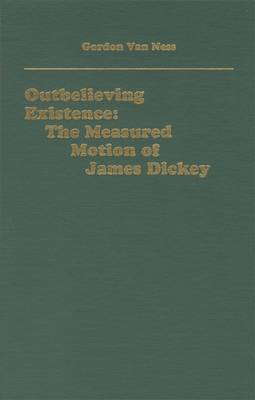
- Afhalen na 1 uur in een winkel met voorraad
- Gratis thuislevering in België vanaf € 30
- Ruim aanbod met 7 miljoen producten
- Afhalen na 1 uur in een winkel met voorraad
- Gratis thuislevering in België vanaf € 30
- Ruim aanbod met 7 miljoen producten
Zoeken
Omschrijving
Surveys the scholarship and criticism surrounding Dickey's work, detailing the poet's intent as well as the critical reception. In their analysis of James Dickey's work, critics have often assumed too narrow a focus, concerning themselves with a reputation as a man larger than life, who hunts rattlesnakes with a blowgun and who shoots white-water rapids.Such critics do not see the forest at all; they mistake the tree for the forest.
In the more than thirty years since Dickey's first volume of poetry appeared, he has endeavoured to push himself and language into new realms. What he has said, and how he has said it, have evolved; it is what Dickey terms the "motion" of his poetry. And it has generated both solid scholarship and superficial criticism.
Van Ness' study surveys the scholarship and criticism surrounding Dickey's work in a chronological and methodological manner. Its intent is to synthesise and assess and to suggest areas where further study remains. As it measures the motion, Outbelieving Existence details Dickey's intent as well as the critical reception. No other book has done this.
In the more than thirty years since Dickey's first volume of poetry appeared, he has endeavoured to push himself and language into new realms. What he has said, and how he has said it, have evolved; it is what Dickey terms the "motion" of his poetry. And it has generated both solid scholarship and superficial criticism.
Van Ness' study surveys the scholarship and criticism surrounding Dickey's work in a chronological and methodological manner. Its intent is to synthesise and assess and to suggest areas where further study remains. As it measures the motion, Outbelieving Existence details Dickey's intent as well as the critical reception. No other book has done this.
Specificaties
Betrokkenen
- Auteur(s):
- Uitgeverij:
Inhoud
- Aantal bladzijden:
- 168
- Taal:
- Engels
- Reeks:
- Reeksnummer:
- nr. 1
Eigenschappen
- Productcode (EAN):
- 9781879751279
- Verschijningsdatum:
- 1/07/1992
- Uitvoering:
- Hardcover
- Formaat:
- Genaaid
- Afmetingen:
- 155 mm x 231 mm
- Gewicht:
- 430 g

Alleen bij Standaard Boekhandel
+ 209 punten op je klantenkaart van Standaard Boekhandel
Beoordelingen
We publiceren alleen reviews die voldoen aan de voorwaarden voor reviews. Bekijk onze voorwaarden voor reviews.











